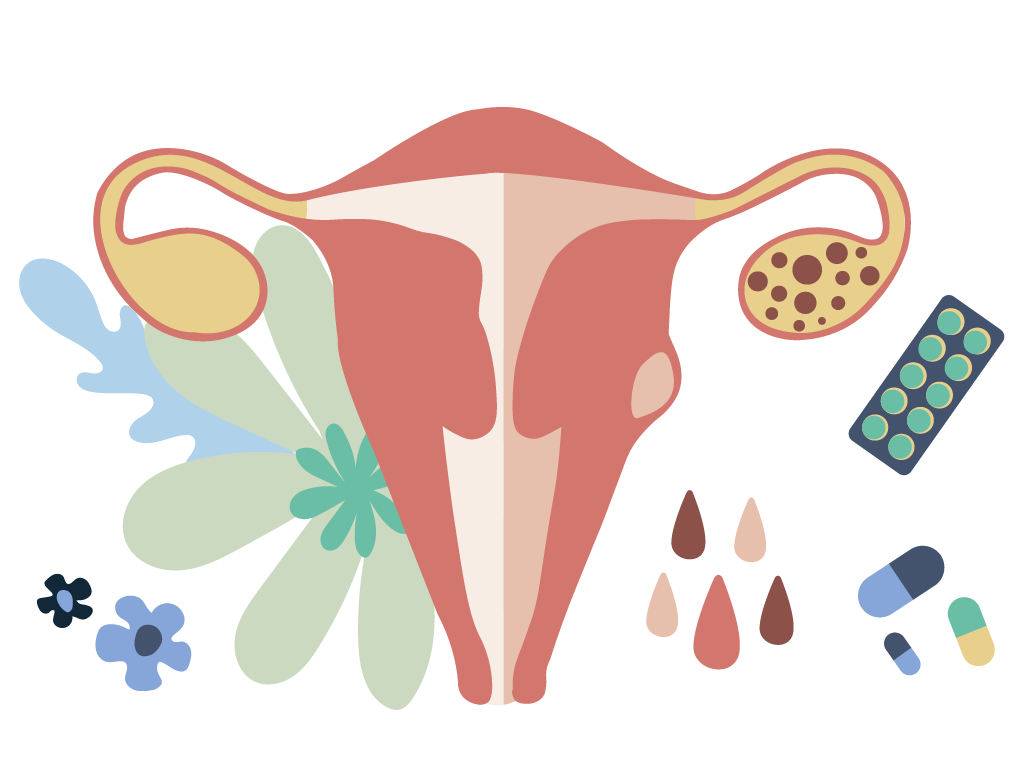This article has been written by Debayani Bose with clinical inputs from Dr. Renuka Dangare.
Yoga has therapeutic benefits which can not only prevent but aim to cure certain lifelong diseases. But are we aware of the role that yoga can play in eliminating the problem of PCOS and its symptoms? Listed in the article are effective yogic asanas which can help you during PCOS.
Polycystic Ovary Syndrome (PCOS) is an endocrine disorder that can affect women and girls of reproductive age. It’s a common health problem caused by an imbalance of reproductive hormones. The exact cause of PCOS is not known but it’s most often associated with genetics, insulin resistance, and hormonal imbalance. The PCOS symptoms vary from person to person. Some symptoms include-
- Irregular menstrual cycle
- Weight gain
- Abnormal patterns of facial and body hair
- Hair loss
- Difficulty in conceiving
Women suffering from PCOS can develop cysts when the eggs are not released. An ovarian cyst is a modern epidemic affecting an estimated 2.2% – 26% of women worldwide ranging from adolescents to the elderly. Almost 1 in 10 women suffer from the condition. It is also the highest causal factor for infertility among women. Modern science is still struggling with a cure. Yoga has proven to be very useful in its treatment. Yoga regularises the imbalance of hormones, reduces testosterone levels, and alleviates anxiety and depression. According to a study, a regular one hour of yoga practice thrice a week for three months reduces testosterone levels by 29%.

How does yoga practice help those suffering from PCOS?
Yoga is an invaluable discipline that helps balance and harmonises our minds. Unlike stretching or fitness exercise, yoga is much more than just physical postures. Yoga is a unique technique as it connects the body and the mind to the rhythm of our breath.
Yoga practice aligns the balance of the body, improves blood circulation to the pelvic areas, and reduces blood sugar levels and testosterone levels, which eventually improves the hormonal imbalance and helps in losing weight. Several asanas open up the pelvic region, align the lower spine, infuses blood and oxygen into all lower organs including urogenital and gastrointestinal, help with digestion, improve metabolism and hormone secretion, therefore aid in reducing cysts, acne, bloating, unwanted hair growth and thus improves fertility in general. Insulin resistance is the main reason that women with PCOS find it hard to lose weight affecting their blood sugar levels. Women suffering from PCOS can regularly practice these asanas, under the guidance of a trained yoga practitioner and after consultation with a physician.
- Kapalbhati Pranayama: The regular practice of Pranayama helps to detoxify our systems. It’s a controlled breathing exercise that can help in deep relaxation and eliminate certain harmful toxins from your body. It enables your mind to de-stress your body and ensures improved functioning of your heart.
- Surya namaskar or sun salutation: Sun salutation or Surya Namaskar is a sequence of 12 yoga poses and is known to have a positive impact on the body and the mind.
- Bhujangasana or cobra pose: It’s a back-bending pose that is derived from the Sanskrit word ‘bhujanga’ which translates to Cobra and asana meaning posture. This asana helps you to promote flexibility and de-stress your system.
- Naukasana or boat pose: Naukasana or boat pose helps to improve ovarian functions. This pose helps to reduce belly fat, improve digestion, and keep blood sugar levels in check.
- Badhakonasana or butterfly pose: This asana and its modifications is named Badhakonasana because of the way it is executed. It has both the feet tucked close to the groin, clasped tightly with the hands as though bound together in a particular angle. It is also popularly known as the Butterfly Pose because of the movement of the legs during the posture, giving the appearance of a butterfly flapping its wings. The word bandha means restrained. Kona means angle and pose means posture.This asana and its modifications helps in opening up the pelvic area, stretches groin and hip. and improves menstrual cycle and is very effective for menstrual pain.
- Ananda balasana or happy baby pose: Happy baby pose focuses on flexibility, breathing, and strength. It helps to improve mental well-being. It also strengthens muscles. It’s named “happy baby” as it resembles a happy baby lying on its back.
- Savasana or corpse pose: It’s customary to end your yoga practice with Savasana or corpse pose where you lie down for five minutes and relax every single muscle in the body. It’s also considered the simplest yoga pose that acts as a great way to overcome PCOS and hormonal imbalances in women. It can be done anytime during the practice for relaxation; helps in destressing and improves circulation to all parts of the body.
Not only do these asanas help anyone suffering from PCOS but also is a common ailment among women in today’s time. It’s also helpful in regularising the menstrual cycles.
There is no effective cure for PCOS. However, yoga can help in managing PCOS and keeping it under control.
We at Proactive aim at creating a world-class medical experience for Indian women and adopt gold standards in every healthcare initiative whether it’s a teleconsultation or a webinar. What sets us apart from the rest, is our liberal, convenient, and holistic approach to healthcare.
Disclaimer: This information is educational and should not be construed as medical advice. Please consult your doctor before making any dietary changes or adding supplements
ProactiveForHer is a digital clinic for women, offering accessible, personalised, and confidential healthcare solutions. We offer out-patient care, diagnostic services and programs for various health concerns of Indian women, across their lifetime - from puberty to pregnancy to menopause.
To know more on the sexual and reproductive health of women, visit https://www.proactiveforher.com/

